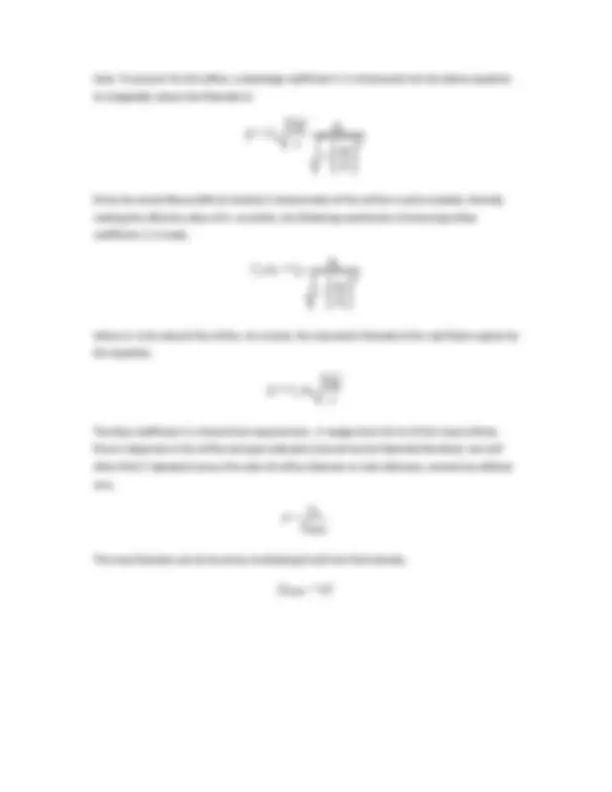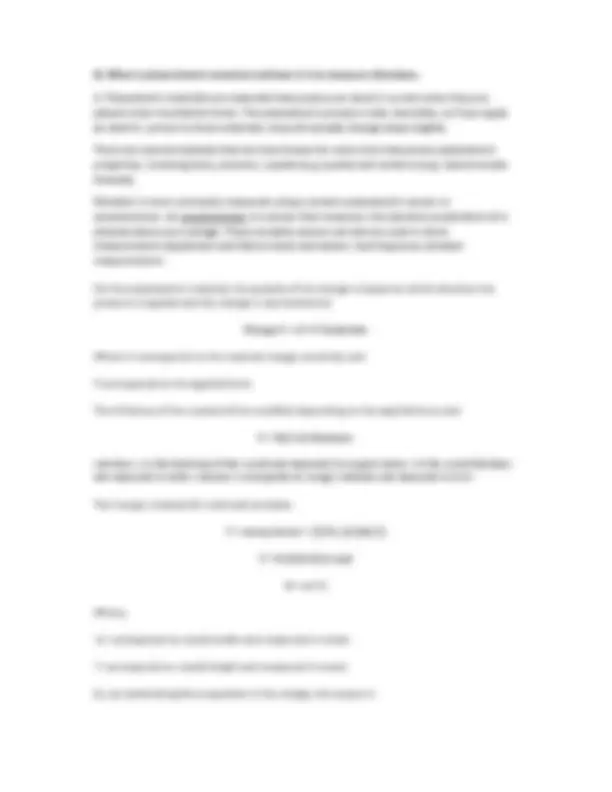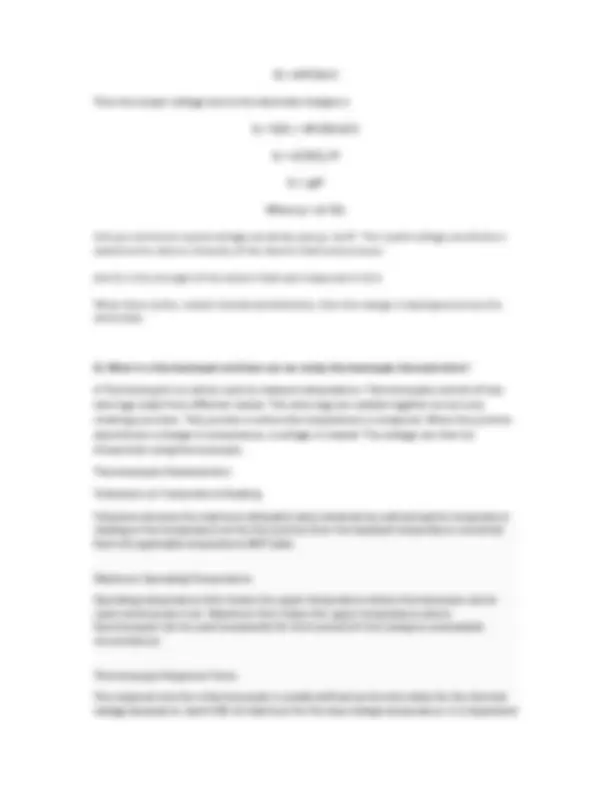





Study with the several resources on Docsity

Earn points by helping other students or get them with a premium plan


Prepare for your exams
Study with the several resources on Docsity

Earn points to download
Earn points by helping other students or get them with a premium plan
Community
Ask the community for help and clear up your study doubts
Discover the best universities in your country according to Docsity users
Free resources
Download our free guides on studying techniques, anxiety management strategies, and thesis advice from Docsity tutors
Homework done on industrial instrumentation assignment
Typology: Assignments
1 / 6

This page cannot be seen from the preview
Don't miss anything!




Q. Design a half-wave rectifier using Matlab Simulink.
Q. What is an orifice meter and how it is used to measure the volumetric flow rate of water? A. An orifice meter is essentially a cylindrical tube that contains a plate with a thin hole in the middle of it. The thin hole essentially forces the fluid to flow faster through the hole in order to maintain flow rate. The point of maximum convergence (vena contracta) usually occurs slightly downstream from the actual physical orifice. This is the reason why orifice meters are less accurate than venturi meters, as we cannot use the exact location and diameter of the point of maximum convergence in calculations. Beyond the vena contracta point, the fluid expands again and velocity decreases as pressure increases. As long as the fluid speed is sufficiently subsonic ,the incompressible Bernoulli's equation describes the flow reasonably well. Applying this equation to a streamline traveling down the axis of the horizontal tube gives, where location 1 is upstream of the orifice, and location 2 is slightly behind the orifice. It is recommended that location 1 be positioned one pipe diameter upstream of the orifice, and location 2 be positioned one-half pipe diameter downstream of the orifice. Since the pressure at 1 will be higher than the pressure at 2 (for flow moving from 1 to 2), the pressure difference as defined will be a positive quantity. From continuity, the velocities can be replaced by cross-sectional areas of the flow and the volumetric flowrate Q, Solving for the volumetric flowrate Q gives, The above equation applies only to perfectly laminar, inviscid flows. For real flows (such as water or air), viscosity and turbulence are present and act to convert kinetic flow energy into
Q. What is piezo-electric material and how is it to measure vibrations. A. Piezoelectric materials are materials that produce an electric current when they are placed under mechanical stress. The piezoelectric process is also reversible, so if you apply an electric current to these materials, they will actually change shape slightly. There are several materials that we have known for some time that posses piezoelectric properties, including bone, proteins, crystals (e.g. quartz) and ceramics (e.g. lead zirconate titanate). Vibration is most commonly measured using a ceramic piezoelectric sensor or accelerometer. An accelerometer is a sensor that measures -the dynamic acceleration of a physical device as a voltage. These versatile sensors can also be used in shock measurements (explosions and failure tests) and slower, low-frequency vibration measurements. For the piezoelectric material, the polarity of the charge is based on which direction the pressure is applied and the charge is represented as Charge C = d × F Coulombs Where d corresponds to the material charge sensitivity and F corresponds to the applied force The thickness of the crystal will be modified depending on the applied force and F = AE/t ∆t Newtons And here, A is the total area of the crystal and measured in a square meter, t is the crystal thickness and measured in meter whereas E corresponds to Young’s modules and measured in N/m^2 The Young’s module (Y) is derived as below. Y = stress/strain = (F/A). (1/(∆t/t)) Y = Ft/A∆t N/m^2 and A = w × L Where, ‘w’ corresponds to crystal width and measured in meter ‘l’ corresponds to crystal length and measured in meter So, by substituting force equation in the charge, the output is
Q = dAY(∆t/t) Then the output voltage due to the electrode charges is E 0 = Q/Cp = dF/(ErE 0 A/t) E 0 = d/(ErE 0 ) tP E 0 = gtP Where g = d/ ErE 0 And g is termed as crystal voltage sensitivity and g = E 0 /tP. The crystal voltage sensitivity is stated as the ratio to intensity of the electric field and pressure. And E 0 is the strength of the electric field and measured in V/m When there exists, crystal mechanical distortion, then the charge is developed across the electrodes. Q. What is a thermocouple and how can we study thermocouple characteristics? A Thermocouple is a sensor used to measure temperature. Thermocouples consist of two wire legs made from different metals. The wires legs are welded together at one end, creating a junction. This junction is where the temperature is measured. When the junction experiences a change in temperature, a voltage is created. The voltage can then be interpreted using thermocouple. Thermocouple Characteristics Tolerances on Temperature Reading Tolerance denotes the maximum allowable value obtained by subtracting the temperature reading or the temperature at the hot junction from the standard temperature converted from the applicable temperature EMF table. Maximum Operating Temperature Operating temperature limit means the upper temperature where thermocouple can be used continuously in air. Maximum limit means the upper temperature where thermocouple can be used temporarily for short period of time owing to unavoidable circumstances. Thermocouple Response Times The response time for a thermocouple is usually defined as the time taken for the thermal voltage (output) to reach 63% of maximum for the step change temperature. It is dependent